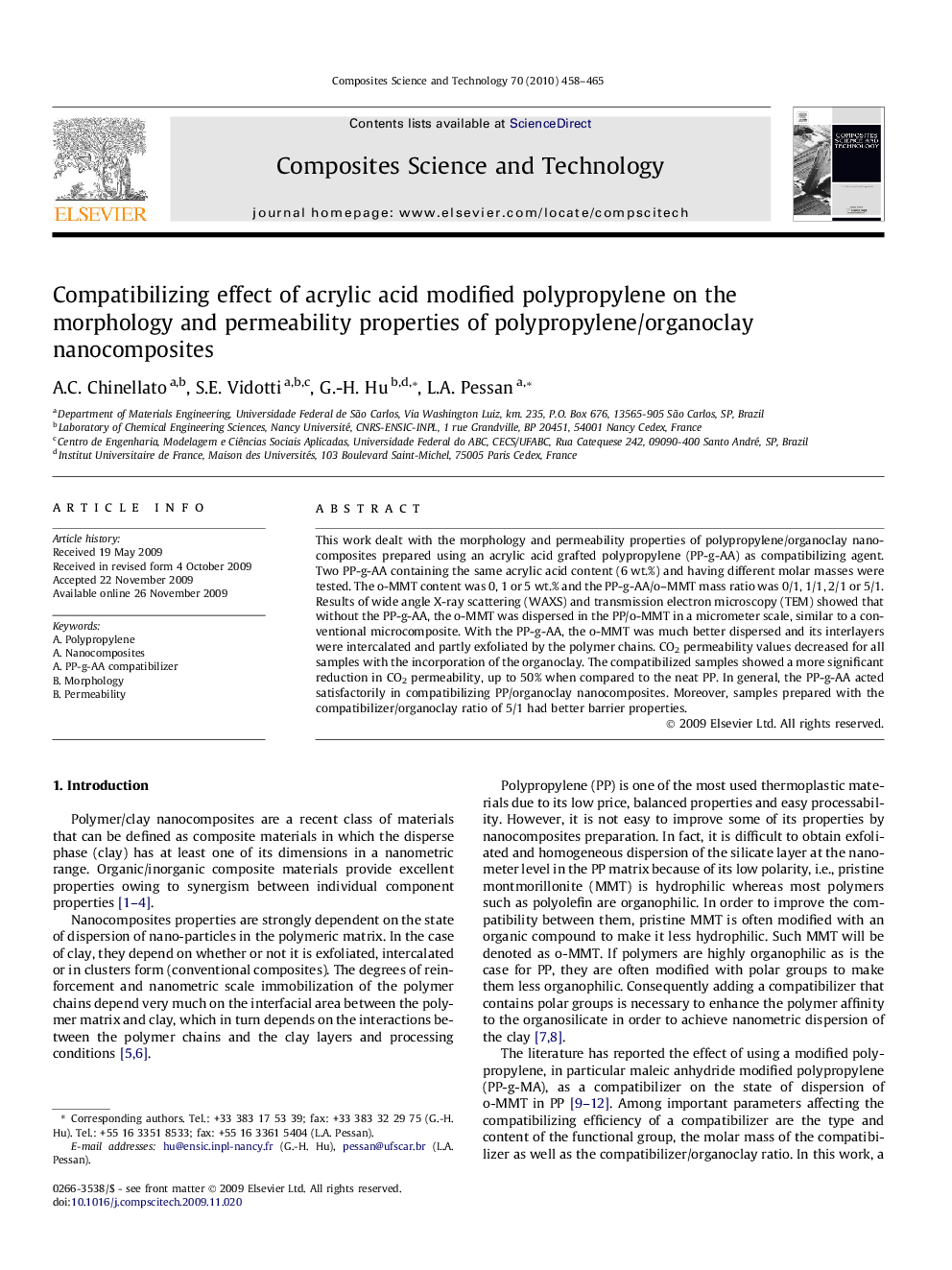| Article ID | Journal | Published Year | Pages | File Type |
|---|---|---|---|---|
| 821358 | Composites Science and Technology | 2010 | 8 Pages |
This work dealt with the morphology and permeability properties of polypropylene/organoclay nanocomposites prepared using an acrylic acid grafted polypropylene (PP-g-AA) as compatibilizing agent. Two PP-g-AA containing the same acrylic acid content (6 wt.%) and having different molar masses were tested. The o-MMT content was 0, 1 or 5 wt.% and the PP-g-AA/o–MMT mass ratio was 0/1, 1/1, 2/1 or 5/1. Results of wide angle X-ray scattering (WAXS) and transmission electron microscopy (TEM) showed that without the PP-g-AA, the o-MMT was dispersed in the PP/o-MMT in a micrometer scale, similar to a conventional microcomposite. With the PP-g-AA, the o-MMT was much better dispersed and its interlayers were intercalated and partly exfoliated by the polymer chains. CO2 permeability values decreased for all samples with the incorporation of the organoclay. The compatibilized samples showed a more significant reduction in CO2 permeability, up to 50% when compared to the neat PP. In general, the PP-g-AA acted satisfactorily in compatibilizing PP/organoclay nanocomposites. Moreover, samples prepared with the compatibilizer/organoclay ratio of 5/1 had better barrier properties.
